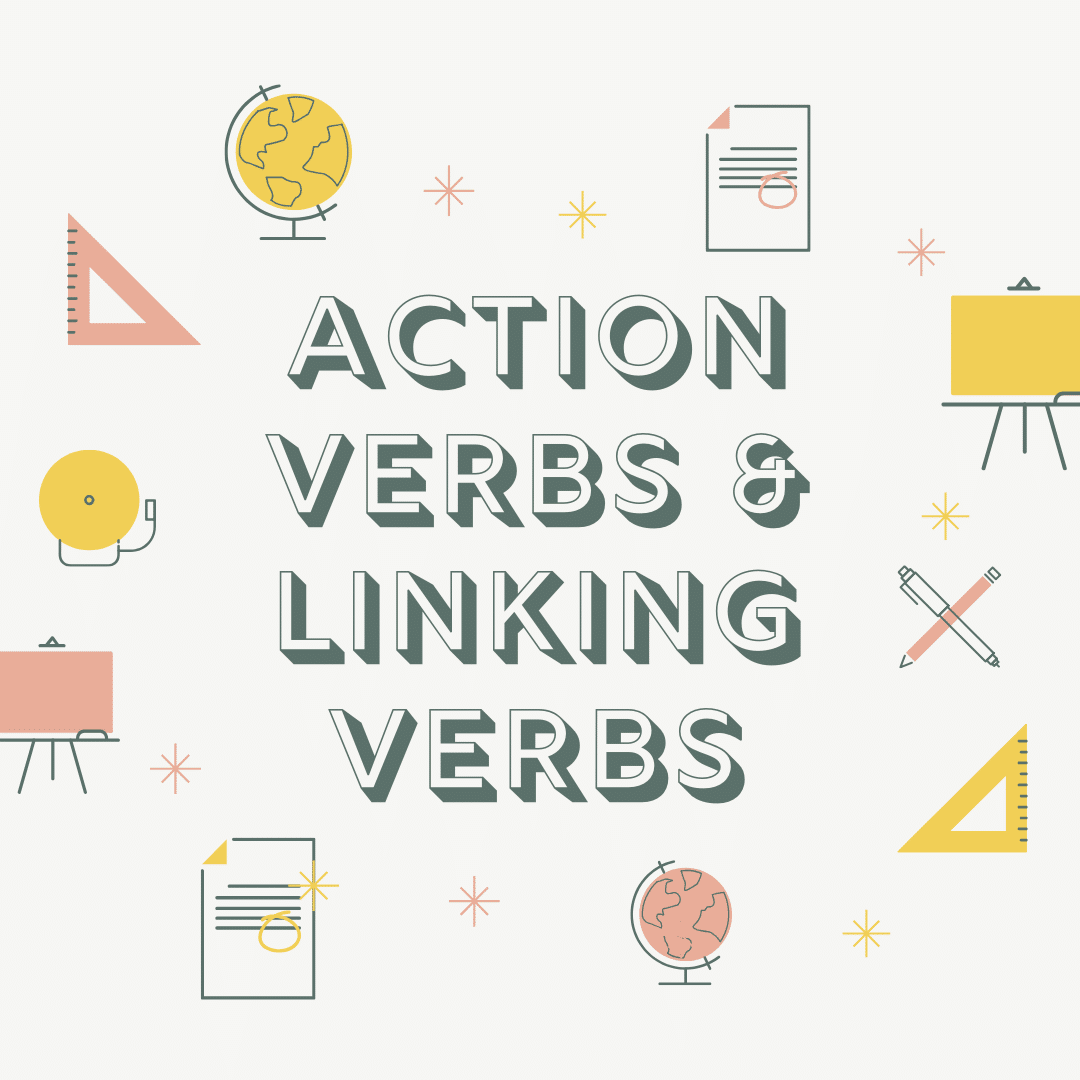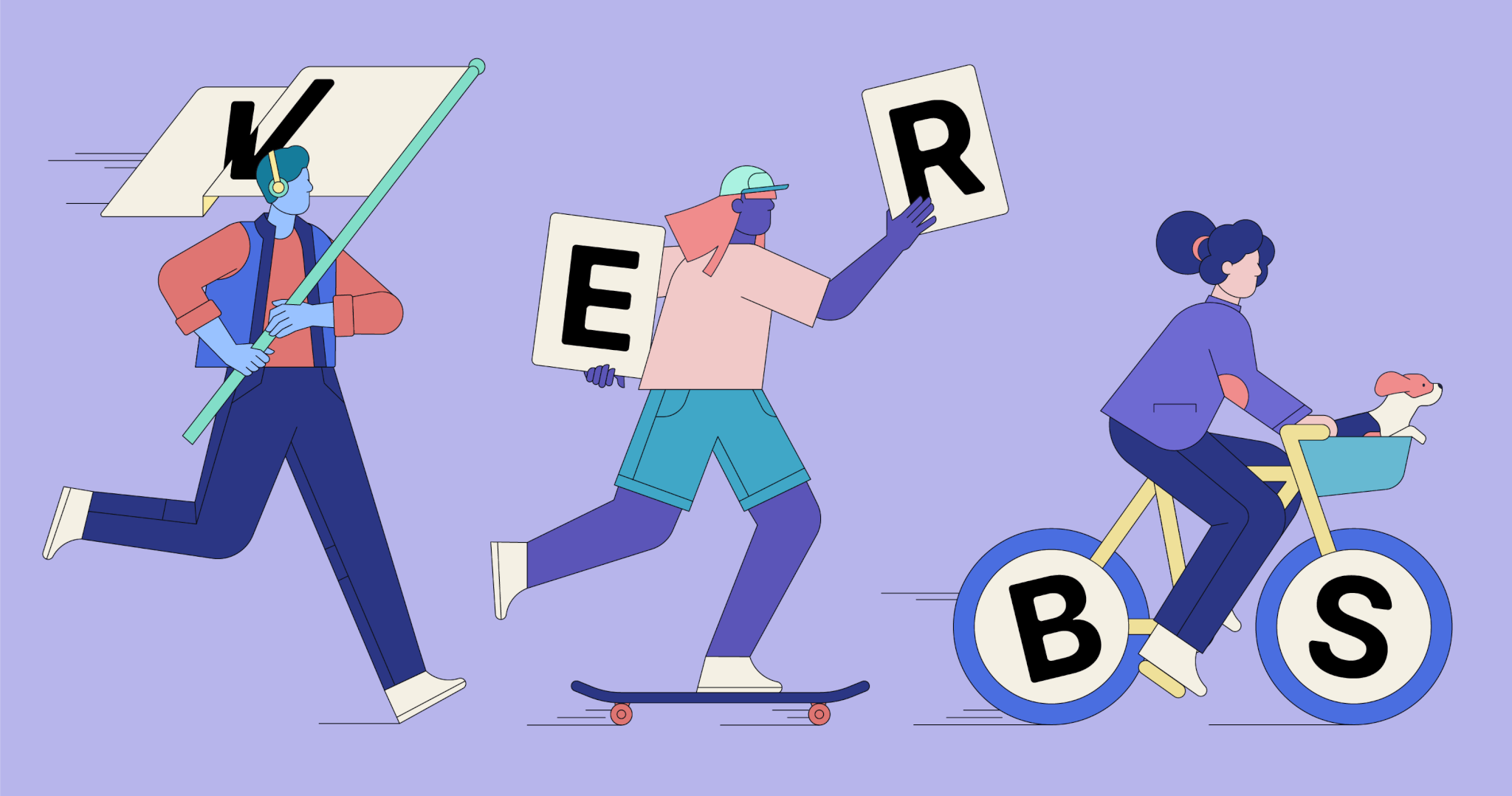THE VERB for Class 10 ENGLISH
What is Verb?
A word used to describe an action, state, or occurrence, and forming the main part of the predicate of a sentence, such as hear, become, happen.
क्रिया क्या है?
किसी क्रिया, अवस्था या घटना का वर्णन करने और वाक्य के विधेय का मुख्य भाग बनाने के लिए प्रयुक्त शब्द, जैसे सुनना, बनना, घटित होना क्रिया कहलाता है।
Types of Verb

There are two types of verbs: (action verbs) and ( being verbs).Action verbs tell what something is, was, or will be doing.
दो प्रकार की क्रिया

क्रिया दो प्रकार की होती है: action verb और being verb. Action verb क्रियाएँ बताती हैं जैसे कि: कुछ क्या है, था या क्या कर रहा होगा।
Examples
Jennifer ate pizza sticks for dinner.(जेनिफर ने डिनर में पिज़्ज़ा स्टिक खाया।)
Please don’t ring the bell so loudly; it hurts my ears.(कृपया इतनी जोर से घंटी न बजाएँ; यह मेरे कान दर्द करवा देता है।)
Being verbs
Being verbs (also called state-of-being verbs and linking verbs) indicate that something exists in a form or state. The subjects in being verb sentences aren’t doing anything. A being verb tells us what something is, was, or will be.
Being verbs
Being verb (also called state-of-being verbs and linking verbs) इंगित करती है कि किसी रूप या state में कुछ मौजूद है। Being verb वाक्य होने में विषय(subject) कुछ भी नहीं कर सकता हैं।
Examples
The new prime minister will be good for the country.(नए प्रधानमंत्री देश के लिए अच्छा होगा।)
Note
Some verbs can act as either a being verb or an action verb. To determine the difference, ask if the subject is performing the action of the verb.
(कुछ क्रियाएँ या तो being verb या action verb के रूप में कार्य करती हैं। अंतर निर्धारित करने के लिए, पूछें कि क्या विषय(subject) action verb की क्रिया कर रहा है।)
Examples
This salad tastes strange.(इस सलाद का स्वाद अजीब है।)
Four types of verb
1)Intransitive Verb(अकर्मक क्रिया)
2)Transitive Verb(सकर्मक क्रिया)
3)Linking Verb(जोड़ने की क्रिया)
4)Auxiliary or Helping Verb(सहायक क्रिया)
Intransitive Verb

A finite verb that does not need an object to make a complete sentence is called an intransitive verb.
अकर्मक क्रिया
जिस परिमित क्रिया को पूरा वाक्य बनाने के लिए किसी वस्तु की आवश्यकता नहीं होती है, उसे अकर्मक क्रिया कहते हैं।
Examples
A flock of birds is flying over our heads.(पक्षियों का झुंड हमारे सिर के ऊपर से उड़ रहा है।)
Transitive Verb
A transitive verb is one that is used with an object: a noun, phrase, or pronoun that refers to the person or thing that is affected by the action of the verb. In the following sentences, admire, maintain and love are transitive verbs.
सकर्मक क्रिया
सकर्मक क्रिया वह है जो किसी वस्तु के साथ प्रयोग की जाती है: एक संज्ञा, वाक्यांश या सर्वनाम जो उस व्यक्ति या वस्तु को संदर्भित करता है जो action की क्रिया से प्रभावित होता है। निम्नलिखित वाक्यों में, प्रशंसा, रखरखाव और प्रेम सकर्मक क्रिया हैं।
Examples
I admire your courage.(मैं आपके साहस की प्रशंसा करता हूँ)
You Should maintain your Figure.(आपको अपना फिगर बनाए रखना चाहिए।)
Ram loves his sister.(राम अपनी बहन से प्यार करता है।)
Linking Verb
All of the sense verbs; look, smell, touch, appear, sound, taste, and feel can be linking verbs. Other examples of verbs that can be linking verbs and action verbs include turn, remain, prove, and grow.
जोड़ने की क्रिया
सभी इंद्रिय क्रियाएँ; देखना, सूंघना, स्पर्श, प्रकट, ध्वनि, स्वाद, और महसूस, क्रिया को जोड़ने वाली क्रिया हो सकती है। उदाहरण जो क्रियाओं को जोड़ सकते हैं वह इस प्रकार है: मुडना, रहना, साबित करना और बढ़ना।
Examples
She is a lawyer.(वह एक वकील है।)
Verb Forms and Auxiliary verbs
Regular verbs can be conjugated into four forms. These forms are important, since they are the basis for all conjugations. All verbs have an infinitive form or a base form before conjugation. The infinitive form of a verb always begins with a “to.”
क्रिया रूप और सहायक क्रिया
नियमित क्रियाओं को चार रूपों में संयुग्मित किया जा सकता है। ये रूप महत्वपूर्ण हैं, क्योंकि ये सभी संयोगों का आधार हैं। संयुग्मन से पहले सभी क्रियाओं का एक असीम रूप या आधार रूप होता है। क्रिया का असीम रूप हमेशा "to" से शुरू होता है।
Examples
to be, to eat, to smell, to run, to pontificate, to scream, etc.(उदाहरण : होना, खाना, सूंघना, दौड़ना, संत होना, चीखना आदि।)
Auxiliary Verbs
(also called helping verbs) are words which are added to the primary forms to create verb phrases. There are two types of auxiliary verbs: primary and modal.
सहायक क्रियाएँ
जिसे सहायक क्रिया भी कहा जाता है) वे शब्द हैं जिन्हें क्रिया वाक्यांश बनाने के लिए प्राथमिक रूपों में जोड़ा जाता है। सहायक क्रिया दो प्रकार की होती है: प्राथमिक और मोडल।
Primary Auxiliary Verbs
Primary auxiliary verbs have two important properties. They change to match the subject of the sentence, and they can also stand on their own as independent verbs.
प्राथमिक सहायक क्रिया
प्राथमिक सहायक क्रियाओं में दो महत्वपूर्ण गुण होते हैं। वे वाक्य के विषय से मेल खाने के लिए बदलते हैं, और वे स्वतंत्र क्रियाओं के रूप में स्वयं भी खड़े हो सकते हैं।
There are three primary auxiliary verbs: have, do, and be.
Do: “Do” is used to express the negative, provide emphasis, and ask questions:(तीन प्राथमिक सहायक क्रियाएं हैं: have, do, and be. Do: "Do" का प्रयोग नकारात्मक को व्यक्त करने, जोर देने और प्रश्न पूछने के लिए किया जाता है:)
Examples:1) Hemingway doesn’t live in Cuba anymore. (negative)(हेमिंग्वे अब क्यूबा में नहीं रहता। )(नकारात्मक)
2)Do you need some help? (question) (क्या आपको कुछ मदद की ज़रूरत है?) (प्रश्न)
3)I do have three puppies for sale. (emphasis) (मेरे पास बिक्री के लिए तीन पिल्ले हैं।) (ज़ोर)
Note- that the auxiliary can be split from the primary verb (सहायक क्रिया को प्राथमिक क्रिया मे विभाजित किया जा सकता हैं।)
Have: “Have” is joined with participles to create the present form of verbs. Have is also combined with modal verbs to express possibility.
Example:1) I have gone to the store five times this week.
Have: (क्रिया के वर्तमान रूप को बनाने के लिए "have" को प्रतिभागियों के साथ जोड़ा गया है। संभावना व्यक्त करने के लिए have को मोडल क्रियाओं के साथ भी जोड़ा जाता है।)
उदाहरण: मैं इस सप्ताह पाँच बार दुकान पर गया हूँ।
Be: “Be” verbs are combined with participles to create progressive verbs.
प्रगतिशील क्रियाओं को बनाने के लिए "Be" क्रियाओं को प्रतिभागियों के साथ जोड़ा जाता है।
Verb Properties
Verbs change based on how they are used in a sentence. Verbs can be transformed out of their infinitive form according to five properties: tense, mood, person, number, and voice.
अंग्रेजी में क्रिया गुण
एक वाक्य में उनका उपयोग कैसे किया जाता है, इसके आधार पर क्रियाएँ बदलती हैं। क्रियाओं को उनके इनफिनिटिव रूप से पाँच गुणों के अनुसार बदला जा सकता है: काल, मनोदशा, व्यक्ति, संख्या और आवाज।
Note
A verb changes according to person and number. Person indicates who is doing or being the verb. Number indicates how many are doing or being.( एक क्रिया व्यक्ति और संख्या के अनुसार बदलती है। व्यक्ति इंगित करता है कि क्रिया कौन कर रहा है।)
Verbals
The words derived from verbs that act as nouns, adverbs, or adjectives in a sentence. There are three types of verbals: infinitives, participles, and gerunds.
मौखिक
क्रिया से व्युत्पन्न शब्द जो वाक्य में संज्ञा, क्रिया विशेषण या विशेषण के रूप में कार्य करते हैं। वर्बल तीन प्रकार के होते हैं: इन्फिनिटिव्स, पार्टिकल्स और जेरंड्स।
Infinitives
Infinitive phrases consist of an infinitive (a verb form before conjugation: to dance, to fly, to circumnavigate, etc.) plus an object. They are usually used as nouns, but they can also be used as adjectives or as adverbs.
क्रिया के साधारण
इनफिनिटिव वाक्यांशों में एक इन्फिनिटिव (संयुग्मन से पहले एक क्रिया रूप: नृत्य करना, उड़ना, घूमना, आदि) और एक वस्तु शामिल होती हैं । वे आमतौर पर संज्ञा के रूप में उपयोग किए जाते हैं, लेकिन उनका उपयोग विशेषण या क्रिया विशेषण के रूप में भी किया जा सकता है।
Examples
As noun (subject): To understand Greek verbs would make me so happy.
As noun (object): Charlotte wanted desperately to make Letticia understand.
As adjective: Adree had nothing to satisfy the baby’s screams.
संज्ञा के रूप में (विषय): ग्रीक क्रियाओं को समझने से मुझे बहुत खुशी मिलती हैं।
संज्ञा (वस्तु) के रूप में: शार्लोट लेटिसिया को समझना चाहता है।
विशेषण के रूप में: एड्रि के पास बच्चे की चीख को संतुष्ट करने के लिए कुछ भी नहीं था।
Participles

Participles are adjectives formed from verbs. They come in two tenses: present and past. Present participle verbs take the present participle form; past participle verbs take the past participle forms. Participial phrases consist of a participle plus an object. They are used as adjectives.
भूतकालिक कृदन्त विशेषण
क्रिया से बने विशेषण हैं। वे दो काल में आते हैं: वर्तमान और अतीत। Present participle क्रिया वर्तमान present participle का रूप लेती है; past participle क्रिया पिछले past participle का रूप लेतो हैं।कृदंत का उपयोग विशेषण के रूप में स्वयं ही किया जा सकता है।
Gerunds
Gerunds are verbs in the present participle form that are acting as nouns. Gerunds will always have the –ing ending.
जेरंड्स
जेरंड्स वर्तमान कृदंत रूप में क्रिया हैं जो संज्ञा के रूप में कार्य कर रहे हैं। जेरंड्स का हमेशा अंत होगा।
Example
Example: Swimming is a good form of exercise. तैरना व्यायाम का एक अच्छा रूप है।
Gerund phrases begin with a gerund (an -ing word which looks exactly like a present participle, but which is used as a noun.) A gerund phrase can be used in any way a noun can:(जेरंड्स वाक्यांश एक गेरुंड से शुरू होते हैं (an -ing word जो बिल्कुल वर्तमान कृदंत की तरह दिखता है, लेकिन जिसका संज्ञा के रूप में उपयोग किया जाता है।)जेरंड् वाक्यांश का उपयोग किसी भी तरह से एक संज्ञा के रूप में कर सकते हैं।)
As subject: Playing football has been her hobby.(विषय के रूप में: फुटबॉल खेलना उनका शौक रहा है।)
As a direct object: He loves making drawings.(प्रत्यक्ष वस्तु के रूप में: उसे चित्र बनाना पसंद है।)
As a subjective complement: One of his maids has killed her pet(व्यक्तिपरक पूरक के रूप में: उसकी एक नौकरानी ने उसके पालतू जानवर को मार डाला है।)
As an object of preposition: She amused herself by helping others and seeking blessings.( पूर्वसर्ग के उद्देश्य के रूप में: वह दूसरों की मदद करके और आशीर्वाद मांगकर खुद को खुश करती थी।)
PRACTICE QUESTIONS
Identify the verb in the following sentences and write it in the blank provided next to the sentence:
Select the option which identifies the verb in the sentence:
(a). Books
(b). Are
(c). Shelf
(a). Turn
(b). Right
(c). Your
(a). Cricket
(b). Playing
(c). Kids
(a). Book
(b). Please
(c). Refer
(a). Elders
(b). Obey
(c). Always
Answer- i. (b) ii. (a) iii. (b) iv. (c) v. (b)
